
The Noctua NF-A14 was already released at the end of 2012 in the 3-pin versions FLX (1200 RPM) and ULN (800 RPM). These fans took the performance crown back then, offering both very high performance and particularly low noise. To this day, these fans are still being sold and although a possible successor model is on the horizon, it has not yet been released. Thus, 10 years after its release, the Noctua NF-A14 still represents the brand’s top 140mm model. So now the competition has had 10 years to catch up, and we compare newer competitor models accordingly. In the Noctua NF-A14 review, we refer in particular to the PWM version released in 2013 with a 4-pin connector and a 1500-RPM maximum speed. Those interested in the 3000-RPM version can find the Noctua NF-A14 industrialPPC-3000 review here.
Specifications
| Size | 140 x 140 x 25 mm |
| Speed | 300 – 1500 RPM |
| max. volume flow | 140.2 m³/h |
| max. static pressure | 2.08 mm H₂O |
| max. noise | 24.6 dB(A) |
| max. power consumption | 1.56 W |
| Bearing | SSO2 |
| Expected operating time | 150,000 h (approximately 17 years of continuous operation) |
| Warranty | 6 years |
| Price | € 27.90 * (brown) € 29.90 * (chromax.black) |
Packaging and scope of delivery
- Large packaging with good protection
- Two flaps with a view of the fan
- Comprehensive accessories
The packaging of Noctua fans is always an experience. The Noctua NF-A14s come in a box with two flaps. If you open the front flap, you not only get a view of the fan, but you also get a few design aspects explained and the included accessories pointed out. The flap on the back reveals a few features of the fan.
Opening the packaging, we see that the fan is not only protected by the multiple, hefty layers of cardboard, but also receives further protection in a plastic frame. This is also where the rich accessories are located. On the one hand, this consists of an extension cable, a low-noise adapter and a Y-splitter. On the other hand, silicone connectors are found for mounting, which protect against the transmission of vibrations. Last but not least, four regular case fan screws are also included.
Design and workmanship
- Typical Noctua color scheme
- High-quality workmanship
- Silicone corners to reduce vibration transmission
The Noctua NF-A14 PWM is a 140mm fan that comes in Noctua’s signature beige-brown color combination. However, a black chromax.black.swap version is also available. The permanently mounted 4-pin PWM cable is quite short at 20 cm, which is helpful depending on the position in the case – and if it’s not enough, you have the extension cable. Speaking of the cable, it is sheathed in black – except for the area inside the fan frame. The sheathing not only looks good, but also protects the cable. Overall, the fan has a very high-quality finish. And as can also be said so many years after its release, they are durable. Many of these fans have now been in use for several years and the failure rate has proven to be very low. By no means an unimportant aspect when investing in these not exactly cheap fans.
The fan’s frame looks very normal in shape at first, but a few subtleties stand out, like the stepped air intake. The fan blades are quite large and the distance to the frame rather small, but noticeably larger than on the smaller NF-A12x25. At the corners, you’ll find the typical brown silicone corners. These can also be removed for mounting accessories.
The Noctua accessories
- Some included accessories
- Additional accessories are available for purchase
To the Noctua NF-A14 is already supplied with the low-noise adapter, the silicone plugs for the housing mounting, the Y-adapter and the extension cable a neat accessory package, which is otherwise rarely found. Apart from that, Noctua also offers optionally available accessories.
Here, the Noctua NA-IS1-14 spacers in particular stand out, which increase the distance between the fans and, for example, a radiator by 5 mm in a pull configuration. This ensures that turbulence is reduced, which benefits both performance and volume.
For the push configuration, there is the Noctua NA-SAVG2 sealing lip, which ensures that the pressure built up by the fan cannot escape between the fan and the radiator, but is pushed completely through the radiator.
In the Noctua NF-A14 test, however, we do without the accessories and test in the original condition of the fans.
Test procedures and comparison fans
- Noctua NF-A14 test as a case fan and as a radiator fan
- Comparison against the previous model and various modern competitor models
In the Noctua NF-A14 test as a case fan, one of the fans is used in the front and one in the back as an air outlet in the DeepCool CH510 Mesh Digital. The processor cooler and graphics card fans are set at a constant speed, so the only difference is the case fans.
For the radiator fan test, the comparison fans are set to an Arctic Liquid Freezer II 280 cooling an AMD Ryzen 9 5950X in the front of a Fractal Design Pop XL Air, which comes in at 160W of power consumption under Cinebench load with a 4.2Ghz all-core overclock.
In comparison, the older Noctua NF-P14s is joined by some newer premium fans, such as the be quiet! Silent Wings Pro 4, the Thermaltake Toughfan 14 Pro, and the Corsair AF140 Elite.

The Thermaltake and the Corsair, along with the Noctua NF-A14, are each priced between €25 and €30 at the time of testing, so they are relatively close. The NF-P14s redux-1500 PWM are around 10€ cheaper (but come without all the accessories) and the be quiet! Silent Wings Pro 4 are around 10€ more expensive.
Test as a case fan
- Noctua NF-A14 proves to be still powerful
- In terms of volume, a few newer fans now have an advantage
- At maximum power, all fans get louder than would be comfortable at home
Uniform speed
While the Noctua NF-A14 was also in the running for a long time as an extremely quiet top model, it must now be said that the competition has had 10 years to catch up. For example, the Thermaltake Toughfan 14 Pro as well as the Corsair AF140 Elite and the be quiet! Silent Wings Pro 4 are all a bit quieter when you run the fans at a consistent speed. In return, it is even more impressive that the Noctua NF-A14s still deliver extremely high performance that is largely within the tolerance range to the other fans. However, the Thermaltake fans emit a quiet but noticeable clacking noise, making the Noctua NF-A14 sound more pleasant. However, the Corsair AF140 Elite and the be quiet! Silent Wings Pro 4 are a bit ahead in the meantime. The Noctua NF-P14s redux-1500 perform almost identically to the NF-A14s at the same speed, but get a touch louder.
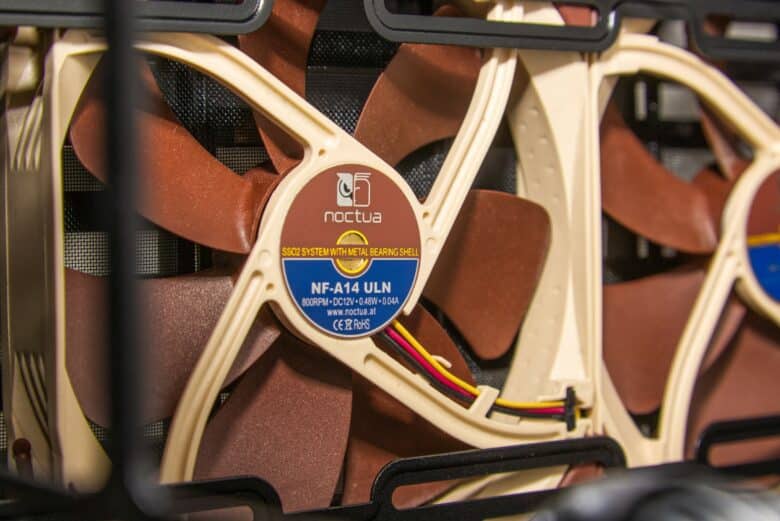
A uniform speed of 800 RPM was chosen, which is also the maximum speed of the Noctua NF-A14 ULN. If you don’t want to bother with fan curves, you can go for this version and still be sure that the fans are barely audible.
Normalized volume
Now, if we choose a volume at the audibility threshold as a reference instead of the speed, the competitor fans naturally have a certain advantage, as they lose less speed than the Noctua NF-A14 or even the NF-P14s. The best low volume performance is offered by the Thermaltake Toughfan 14 Pro and the be quiet! Silent Wings Pro 4. The Noctua NF-A14 and the Corsair AF140 Elite are largely on par, and the cheaper Noctua NF-P14s fall quite a bit behind, as they have to spin about 20% slower to reach the volume level. Ergo: Sure – the Noctua NF-A14s are showing their age a bit here, but still being fully in the mid-range of premium fans 10 years after release is quite an achievement.
Full performance
When fully cranked up in testing, the Noctua NF-A14 PWM are happy to reach over 1500 RPM, still landing in the range of the newer Corsair AF140 Elite in terms of both performance and volume. The Noctua NF-P14s redux-1500 also come very close, but get noticeably louder in the process. The fact that these three perform quite similarly is not surprising where the maximum speed is relatively close. However, if you just want pure performance and don’t care about the volume, you might want to look at the be quiet! Silent Wings Pro 4 or the Thermaltake. Both only get slightly louder than the Noctua NF-P14s redux-1500, but spin noticeably faster and achieve higher performance. Overall, however, none of the fans mentioned here is still tolerable for everyday use at full power in terms of volume. Therefore, the advantage of the other fans is rather theoretical or when it comes to special applications.
Test as a radiator fan
- Meanwhile, the Noctua NF-A14 is overtaken by more modern fans
- Still not a huge distance of performance
- The Corsair AF140 Elite and especially the Thermaltake Toughfan 14 Pro are better radiator fans
Tested at uniform 800 RPM
On the radiator, at uniform RPM, the advantage of the all-rounder Noctua NF-A14 fan is a smaller one compared to the pressure-optimized NF-P14s. Here, performance and volume are on a similar level. Performance-wise, both are ahead of the other fans here – which in turn are quieter than the two Noctua fans. The be quiet! Silent Wings Pro 4, which particularly stood out in the case fan test, fall slightly behind here in terms of performance.
Test at 31 dB(A)
It now becomes more interesting to analyze the Noctua NF-A14 when testing at a consistent volume. Here, in fact, the NF-P14s still sits a bit ahead, but this may still be within the range of measurement tolerance. The be quiet Silent Wings Pro 4 is also in this range, while the Corsair AF140 Elite and the Thermaltake Toughfan 14 Pro in particular pull a bit ahead. This leaves the Noctua NF-A14 PWM sitting in last place in this test comparison, but the difference between the top-ranked Thermaltake fan and the NF-A14 is only around 1.5 Kelvin. The older be quiet! Silent Wings 3 High-Speed are far worse off. Thus, the Noctua NF-A14 PWM is no longer the top performer as a quiet radiator fan, but from a practical standpoint, it’s not completely beaten out either.
Performance at full speed
If you give the fans free rein, the Thermaltake Toughfan 14 Pro still remains at the top of the performance list, but the previously mediocre be quiet! Silent Wings Pro 4 on the radiator moves into second place – purely due to its high speed. The Noctua NF-A14 PWM remains behind in terms of performance in this test, but takes the quietest spot in the comparison along with the Corsair AF140 Elite. The Noctua NF-P14s, as in the other radiator fan tests, is a bit louder, but also a bit more powerful than the Noctua NF-A14. In any case, however, all fans here are also louder than you would practically want to hear them.
Conclusion
The Noctua NF-A14 PWM is still a strong fan 10 years after its launch. True, the competition has caught up well in the meantime, especially the Thermaltake Toughfan 14 Pro on the radiator (albeit with the lower expected runtime). And some other fans offer certain advantages, especially in terms of volume, but in terms of pure performance, the Noctua fans still play at the top. And where the price of the Noctua NF-A14 used to seem high, it has to be said that competing fans have also caught up to the point that the NF-A14s now don’t seem that expensive proportionally. Especially when you consider the extensive accessories included. I’m already excited to see what the successor to the Noctua NF-A14 will be able to do.
Noctua NF-A14
Performance
Noise level
Features
Workmanship
Value for money
90/100
Even 10 years after its release, the Noctua NF-A14 PWM is a strong fan with an extensive feature set and has been able to prove its longevity.
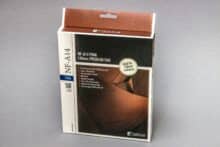
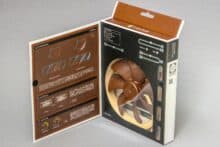
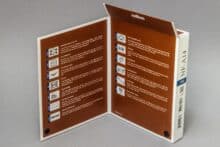
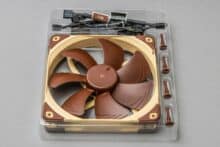
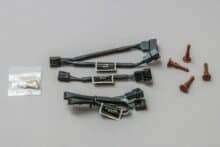


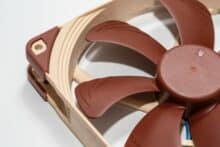
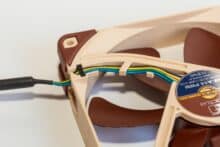


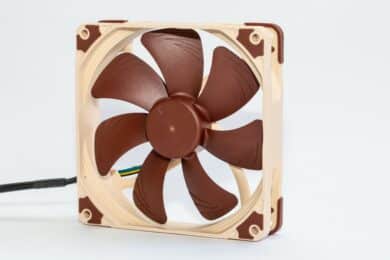
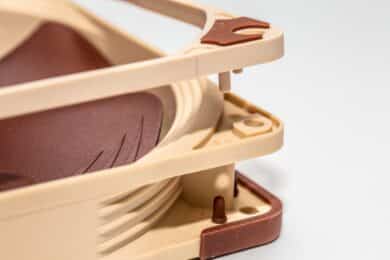





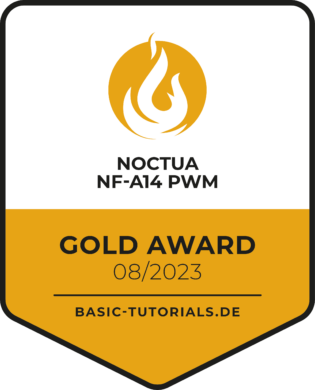


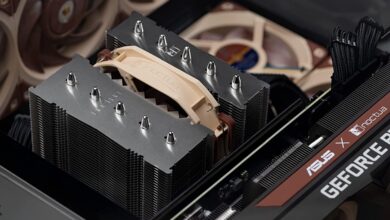
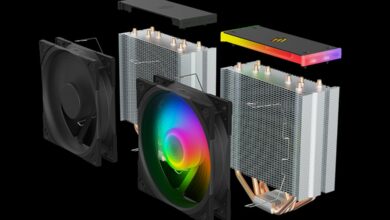
No replies yet
Neue Antworten laden...
Gehört zum Inventar
Beteilige dich an der Diskussion in der Basic Tutorials Community →